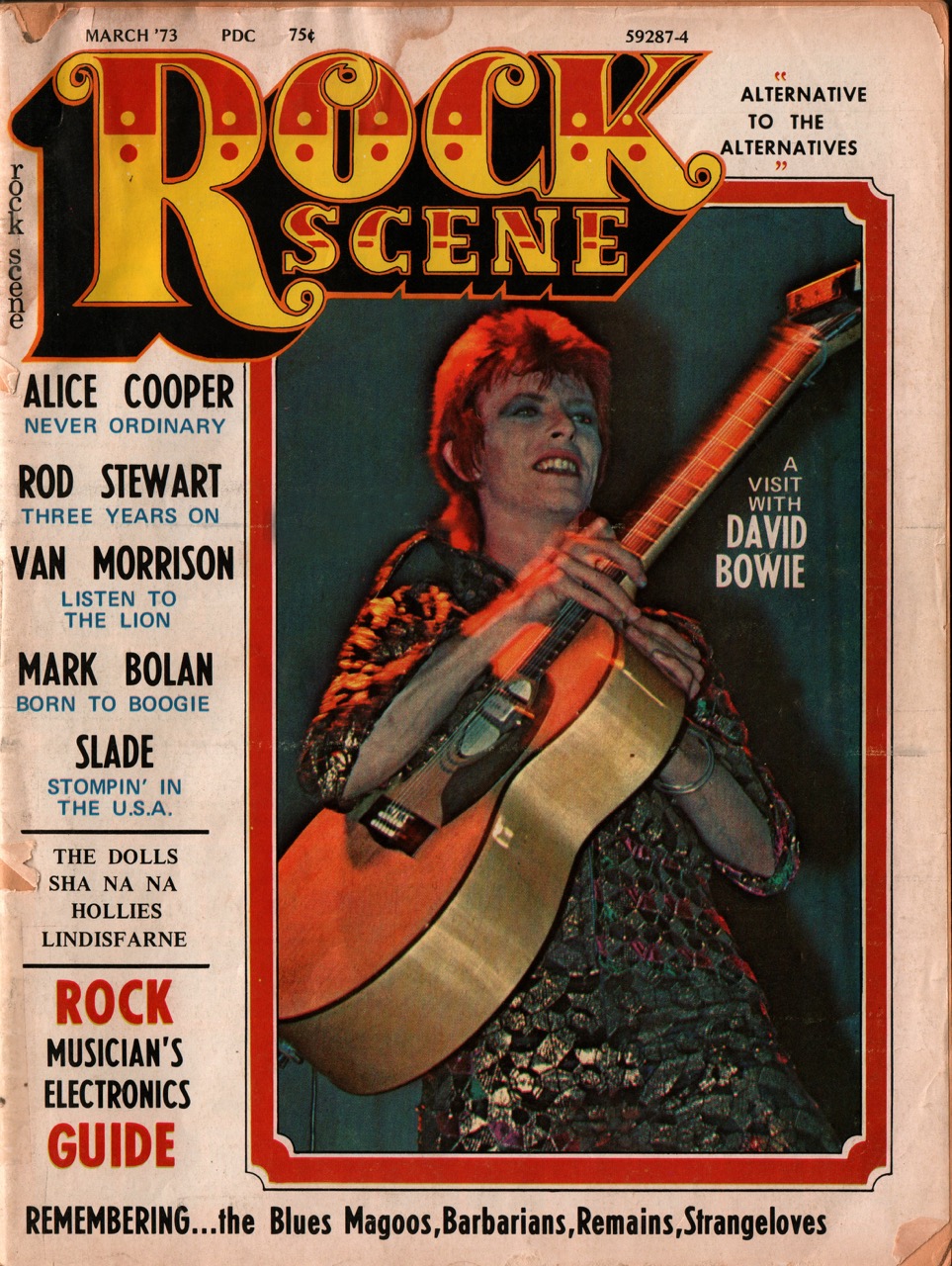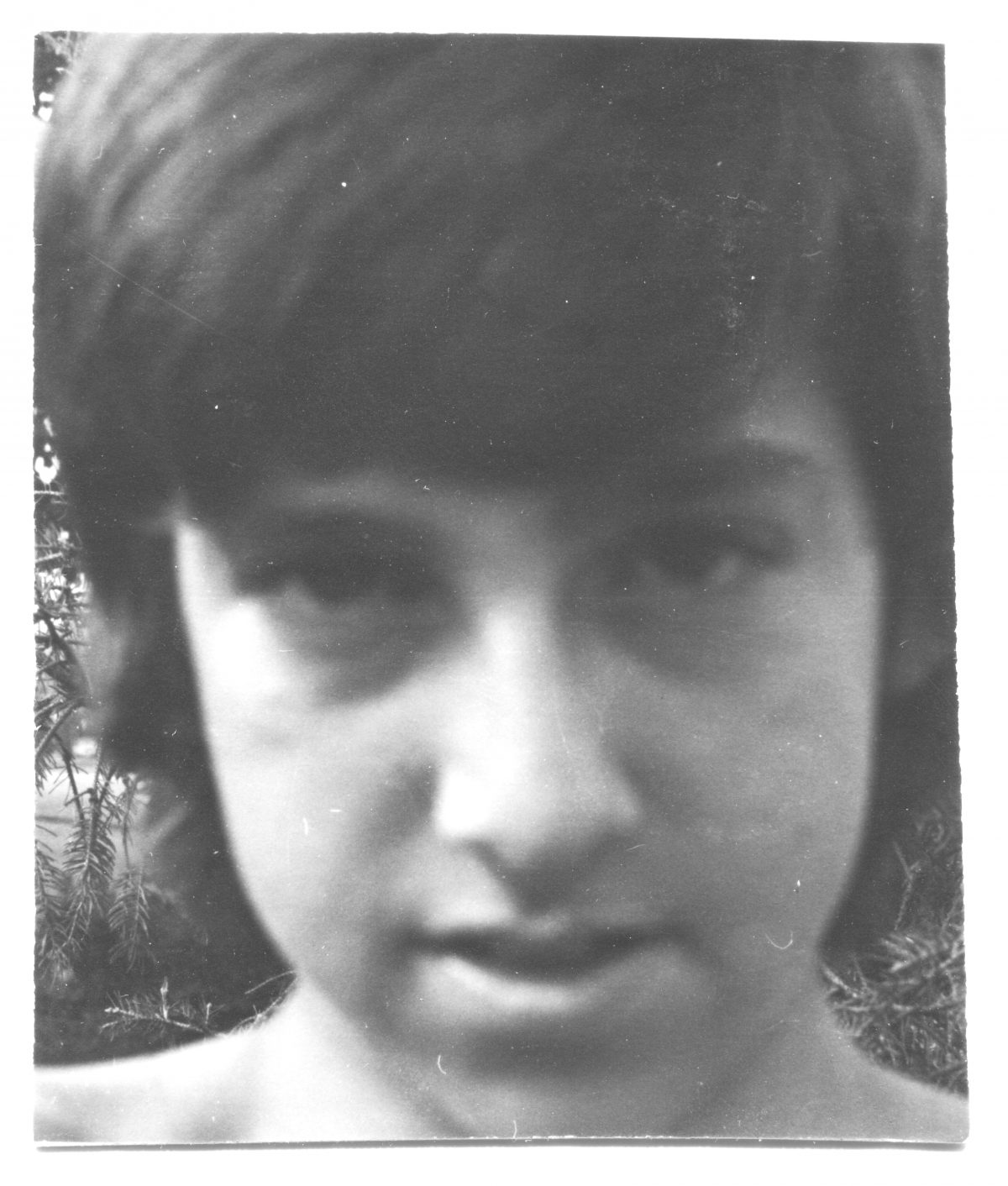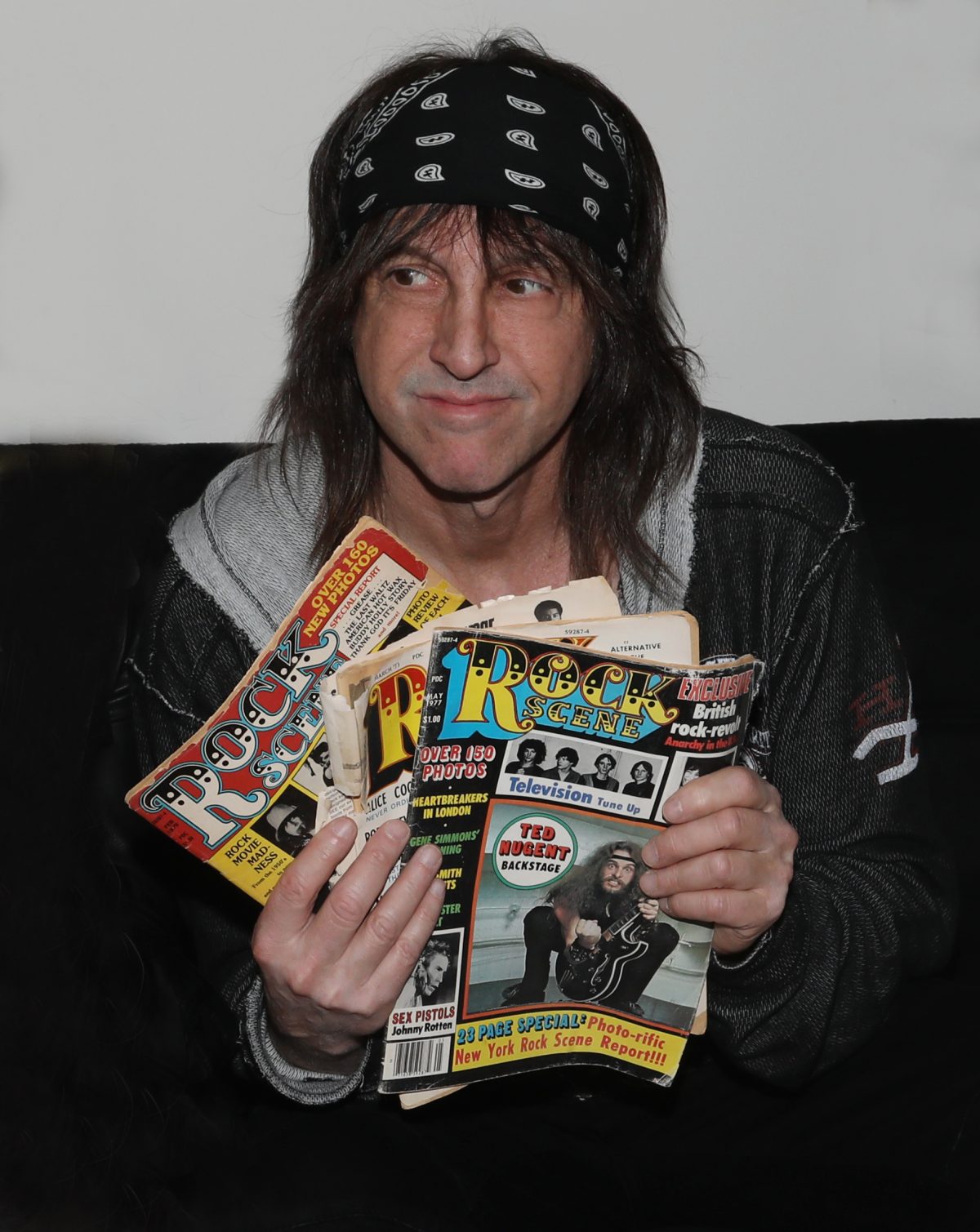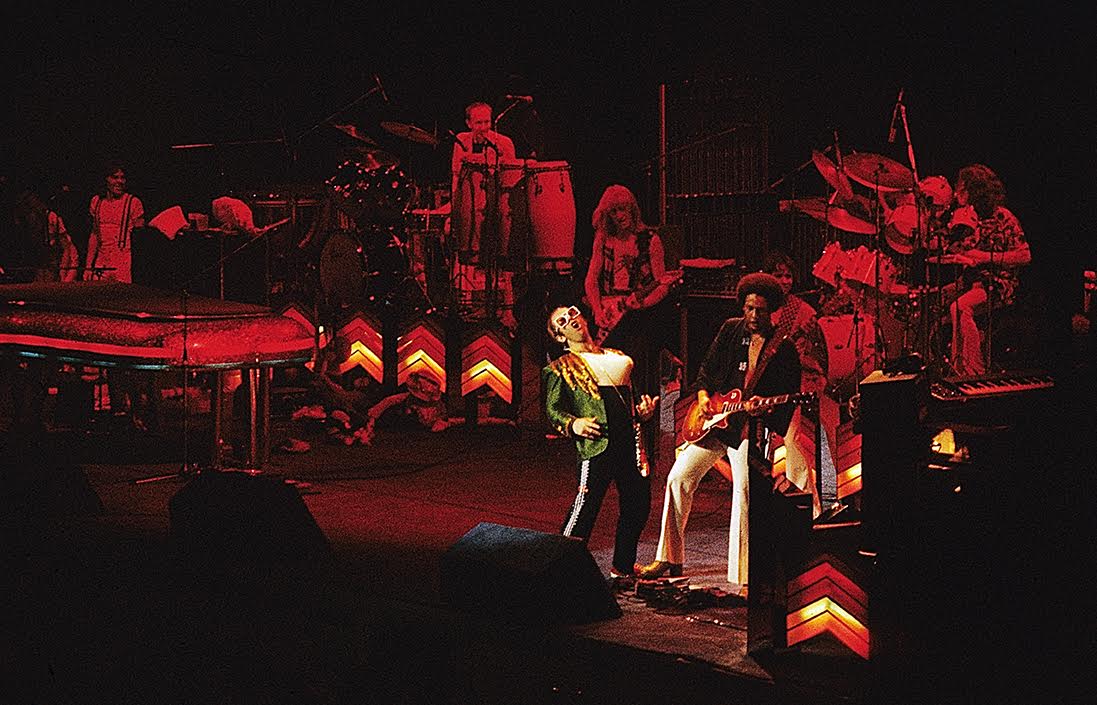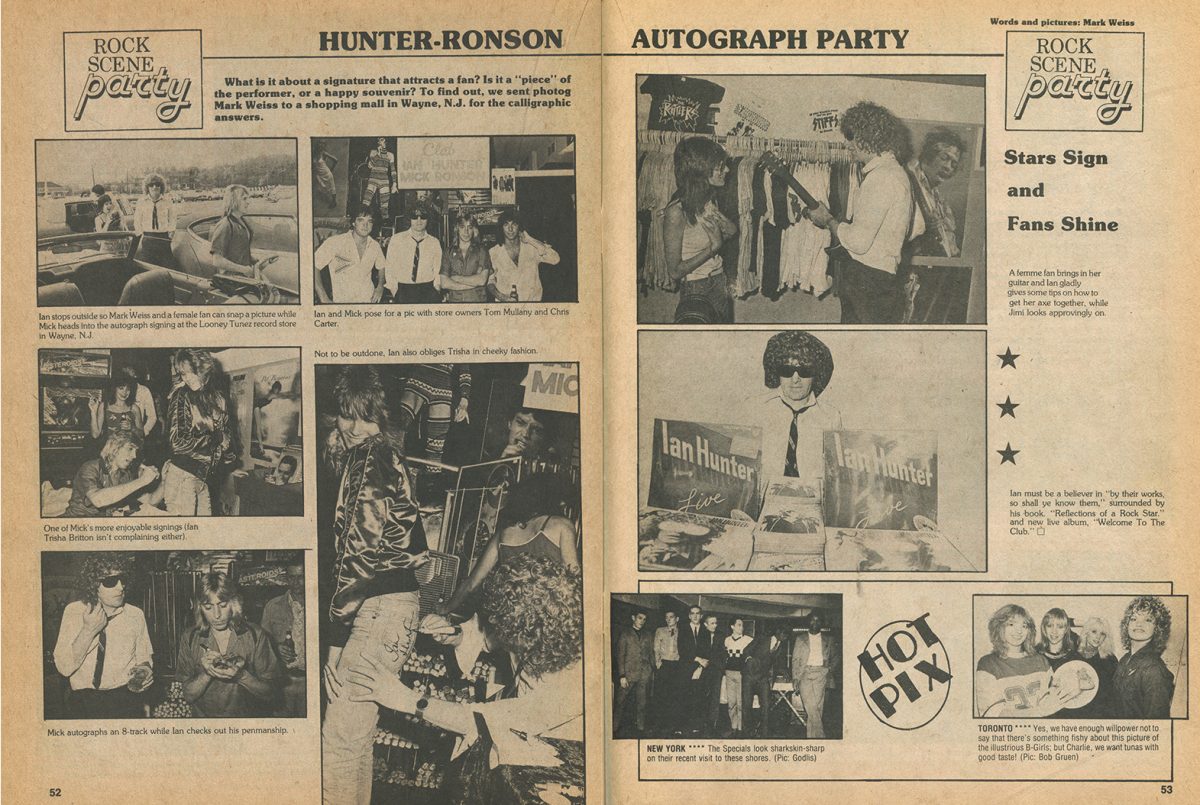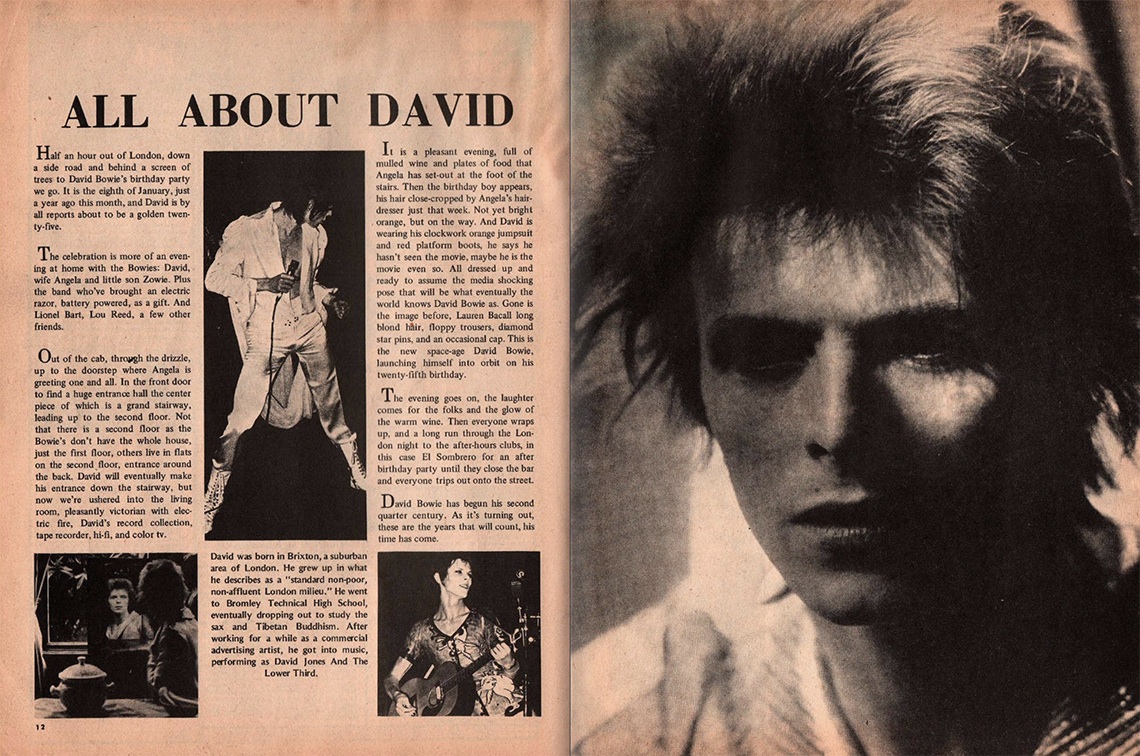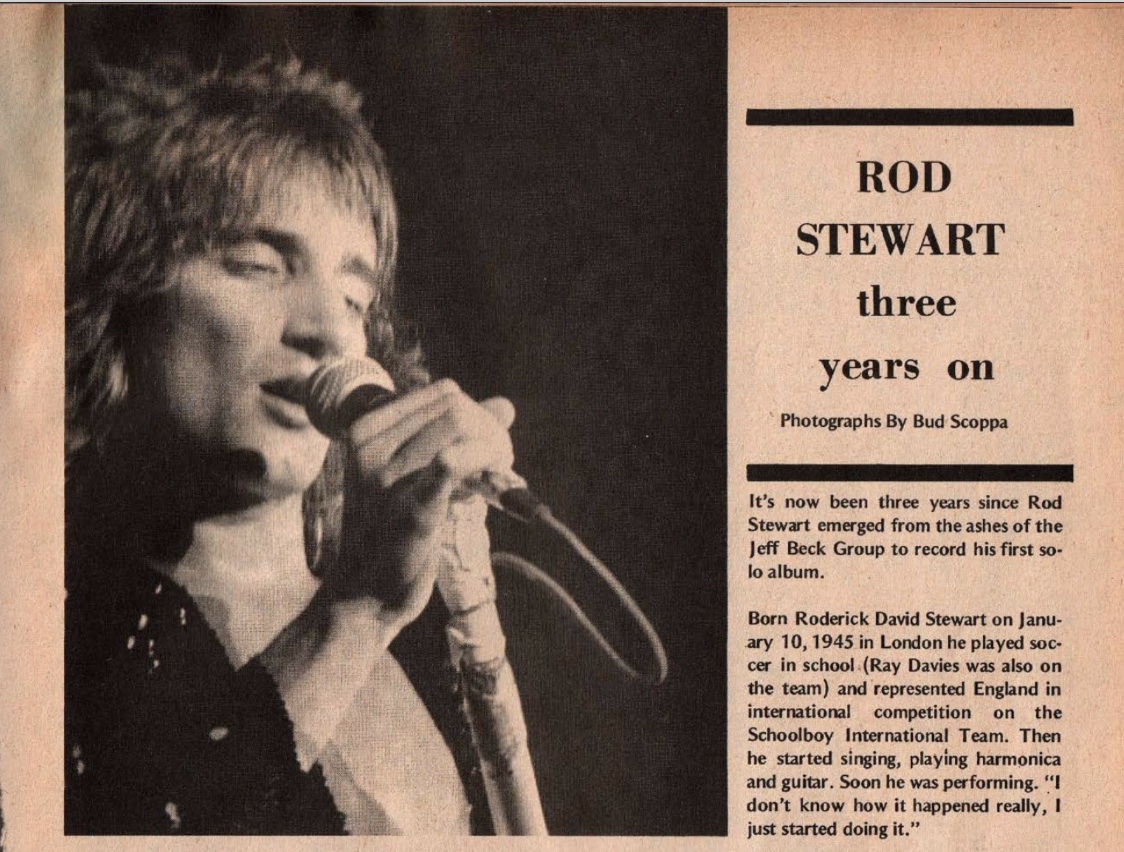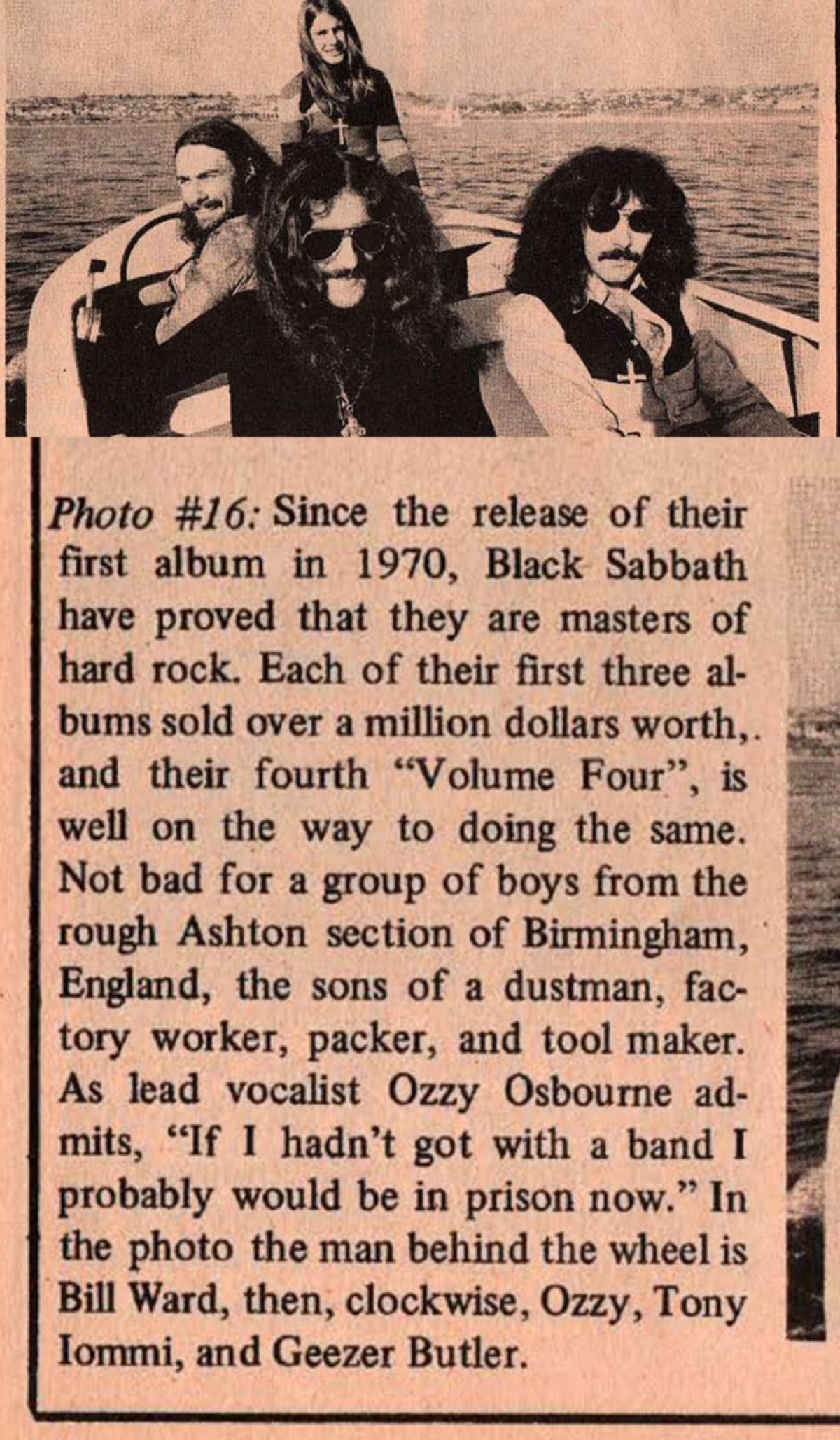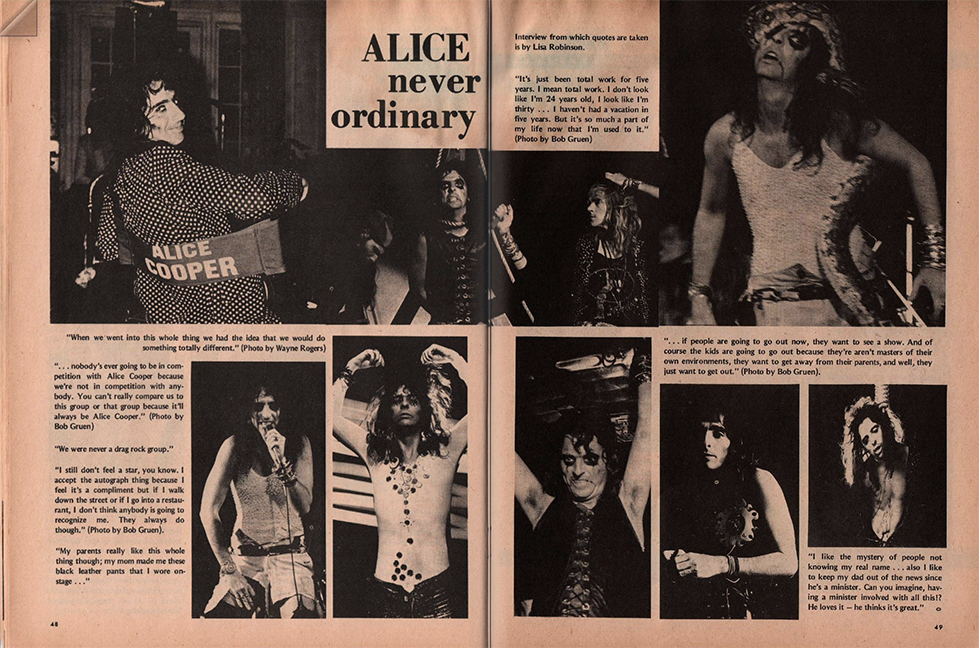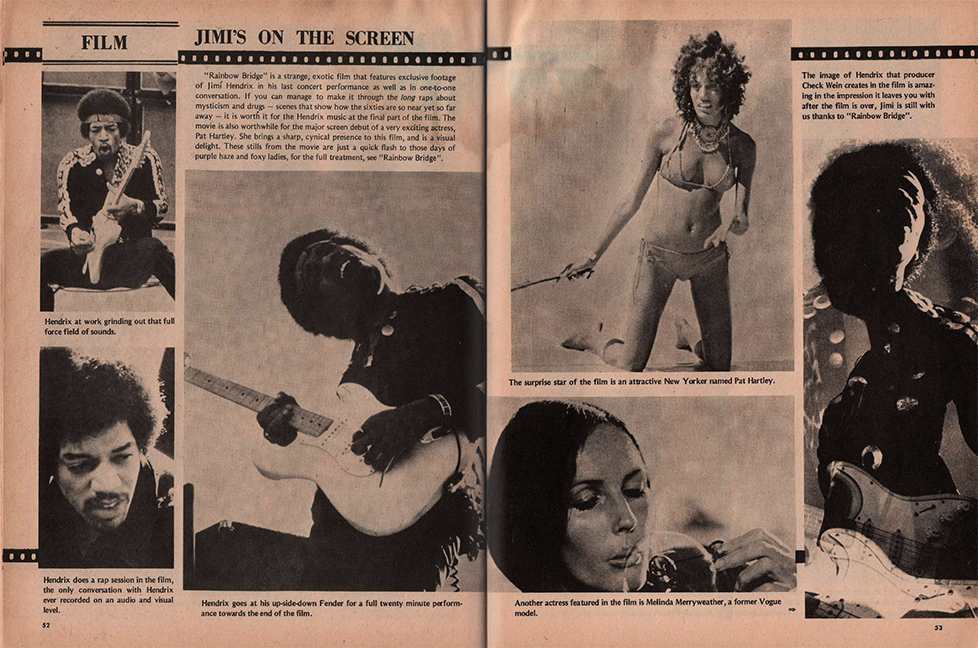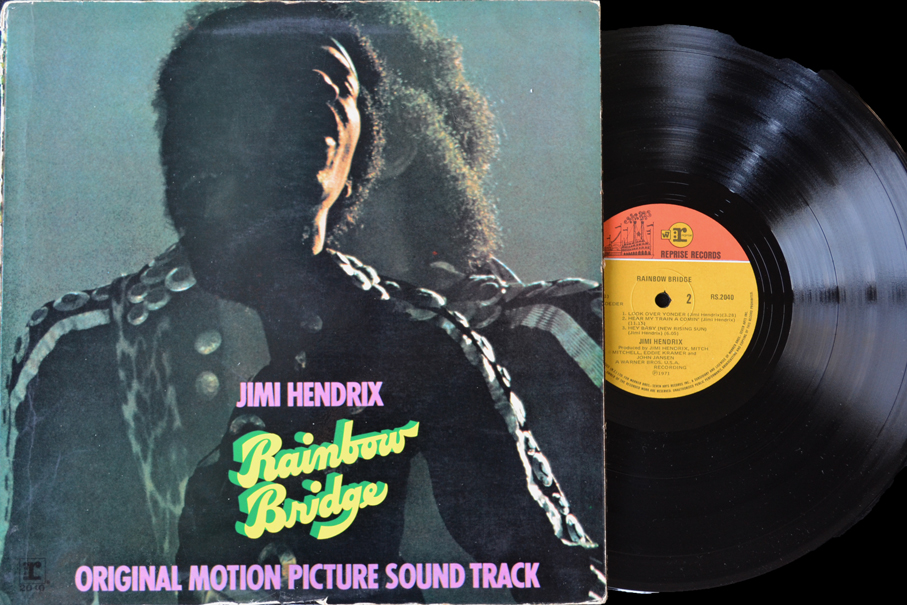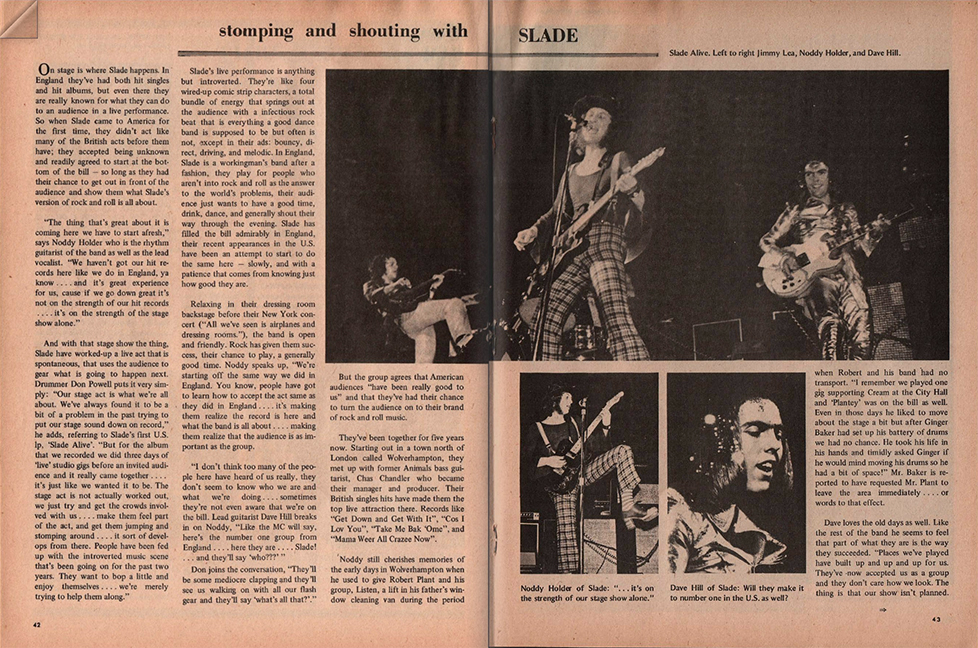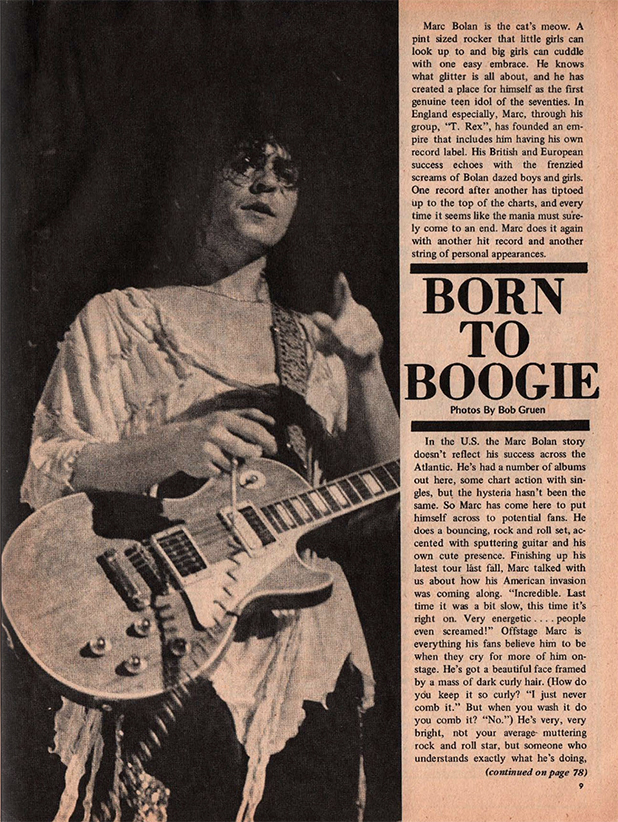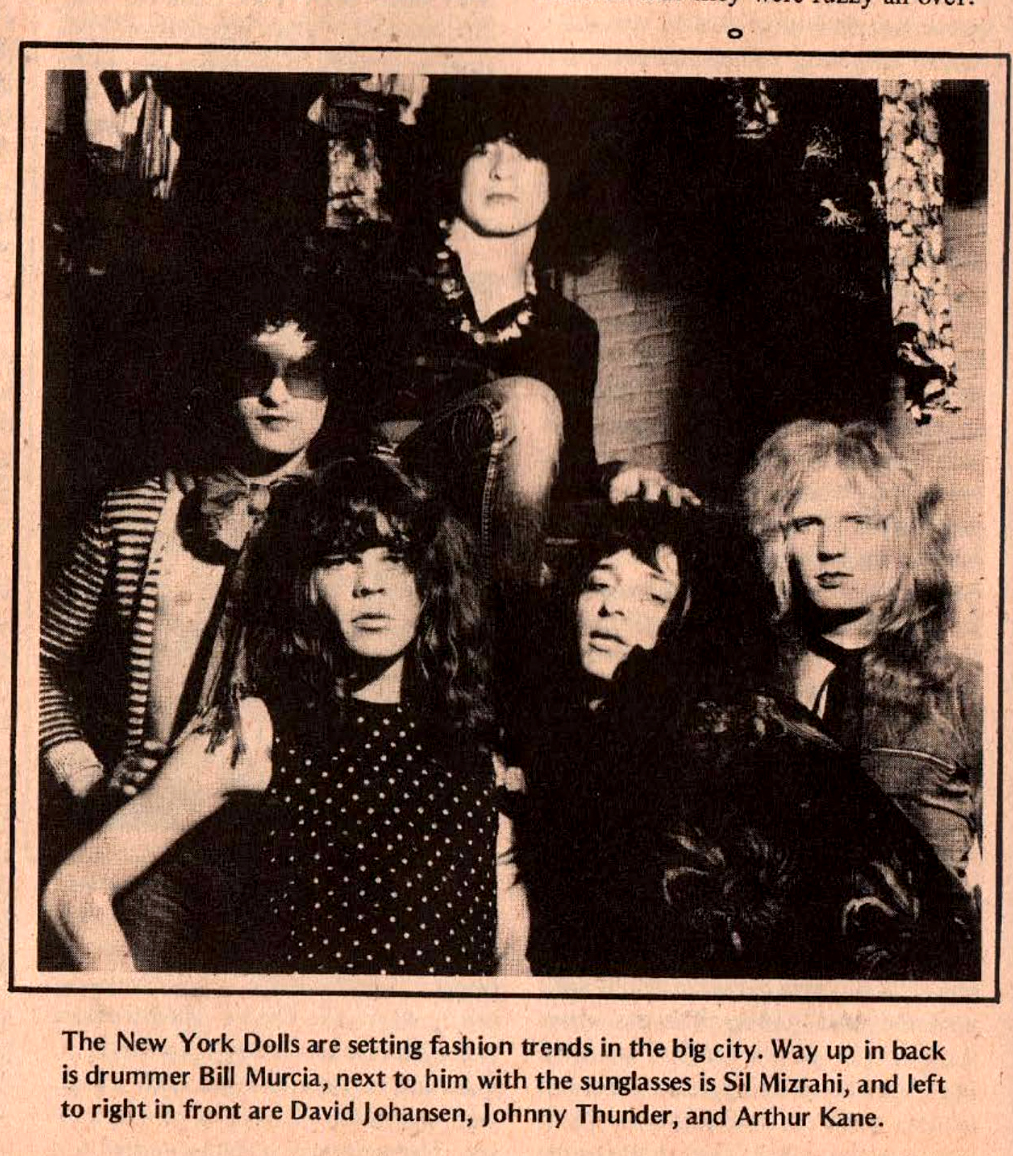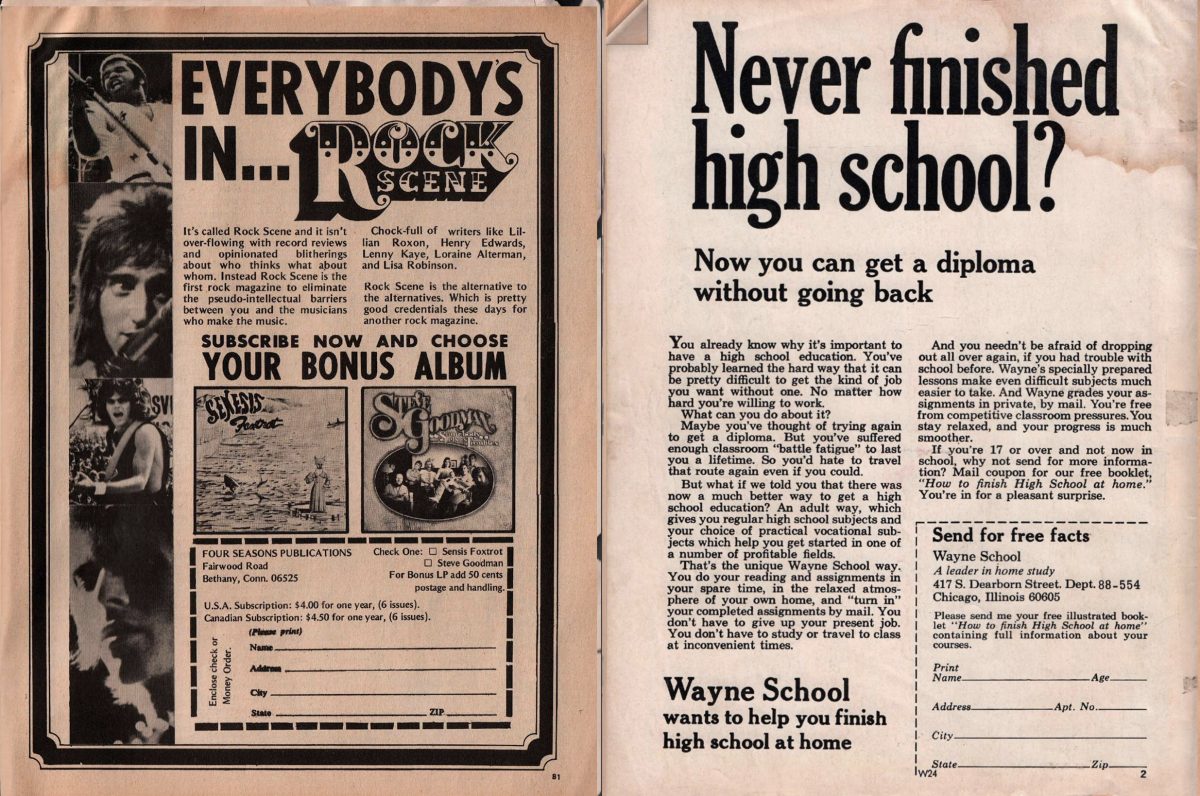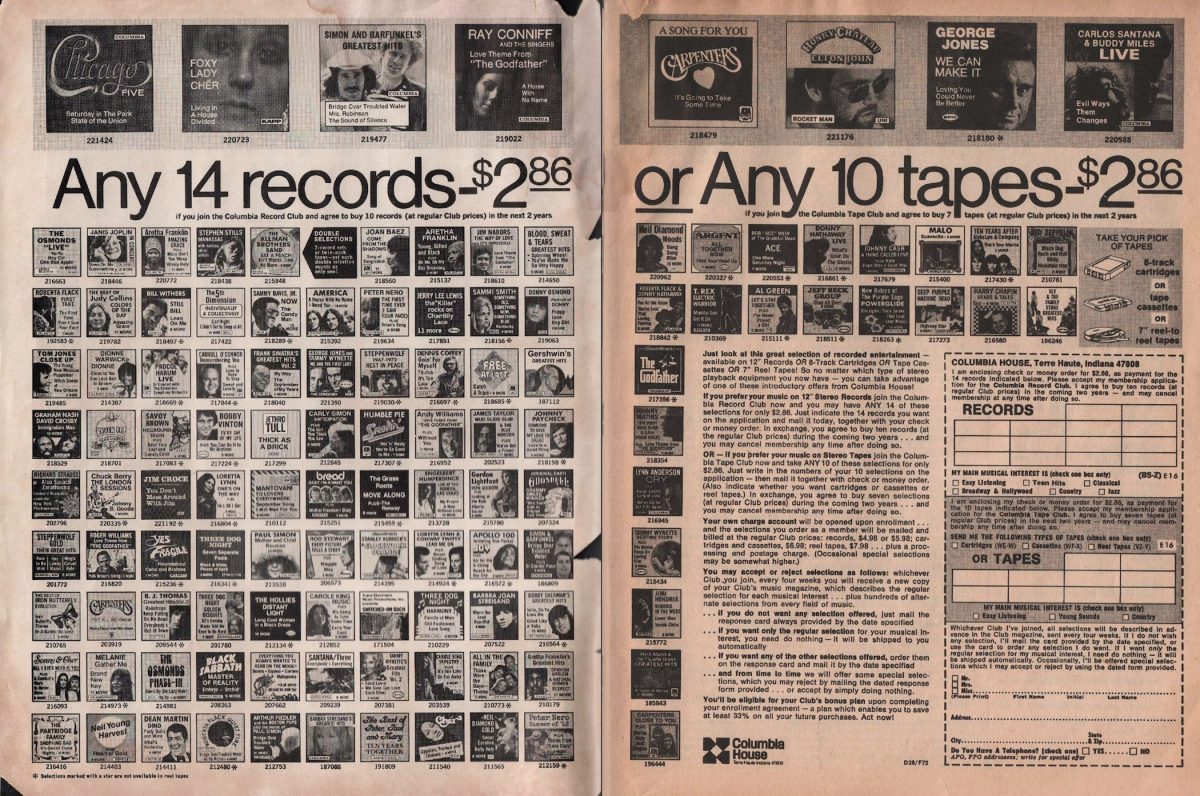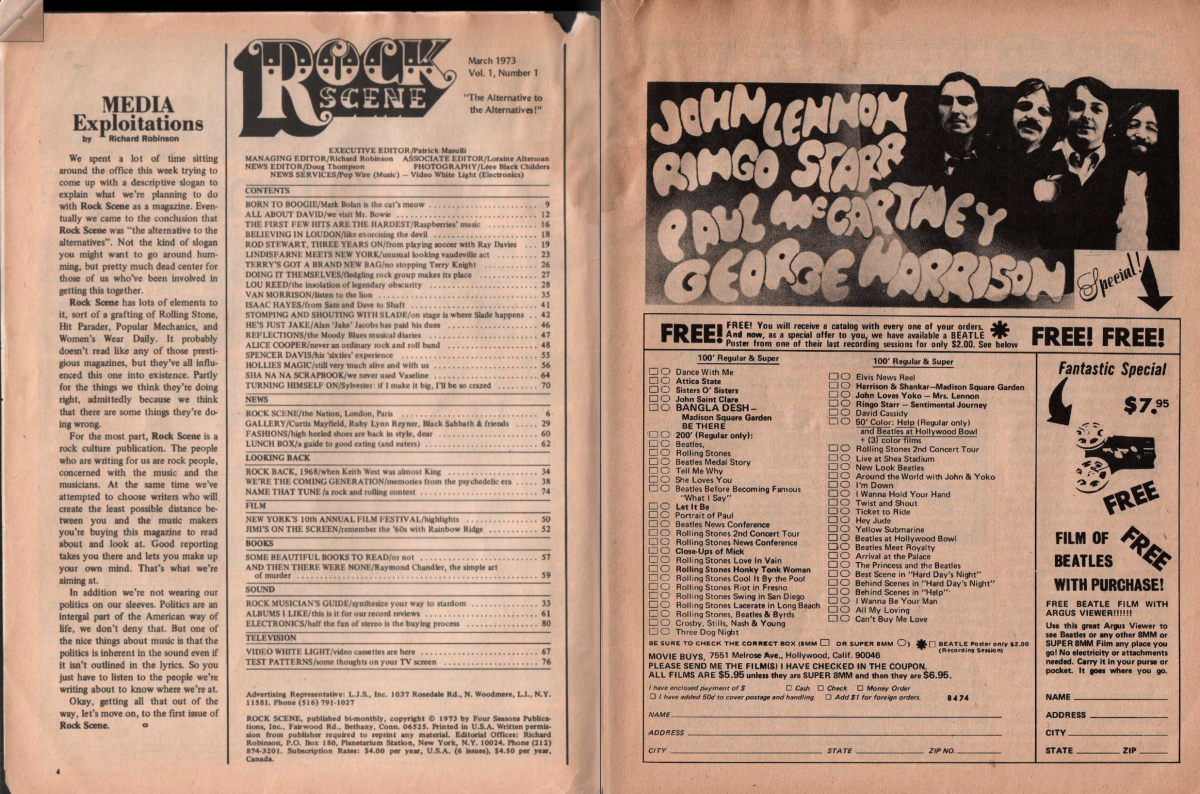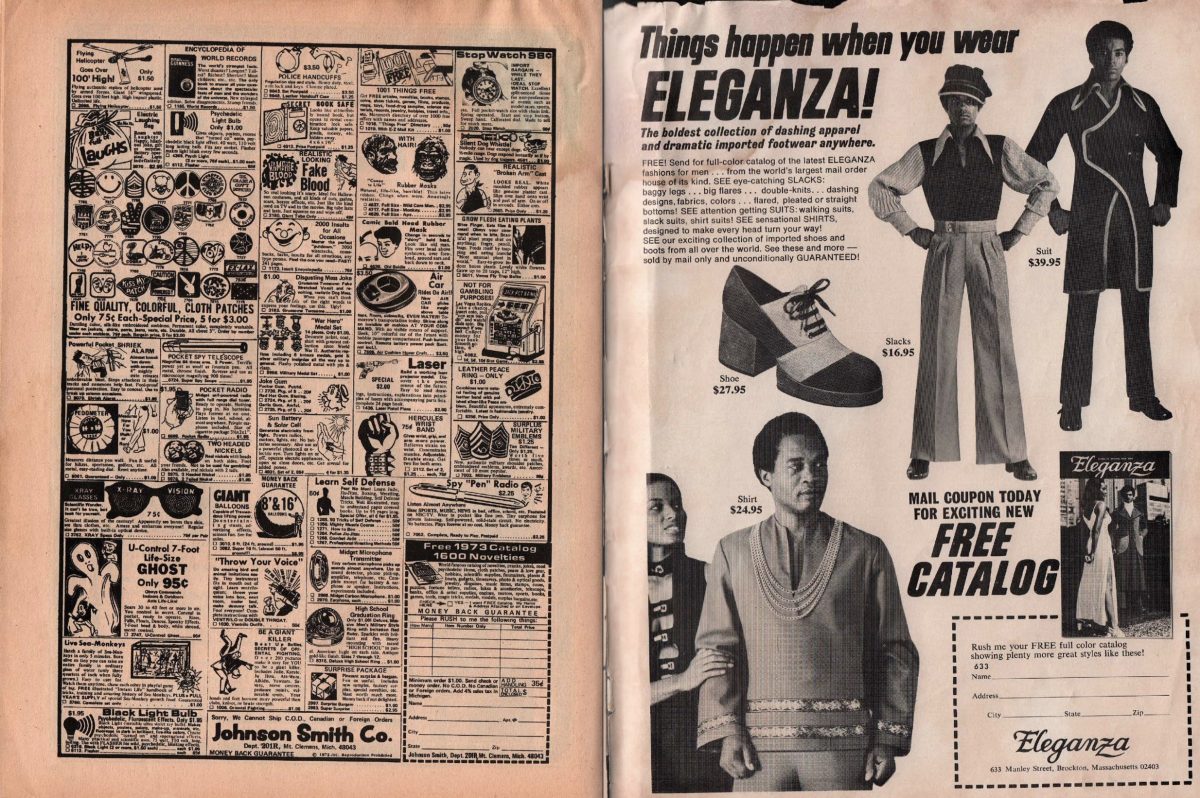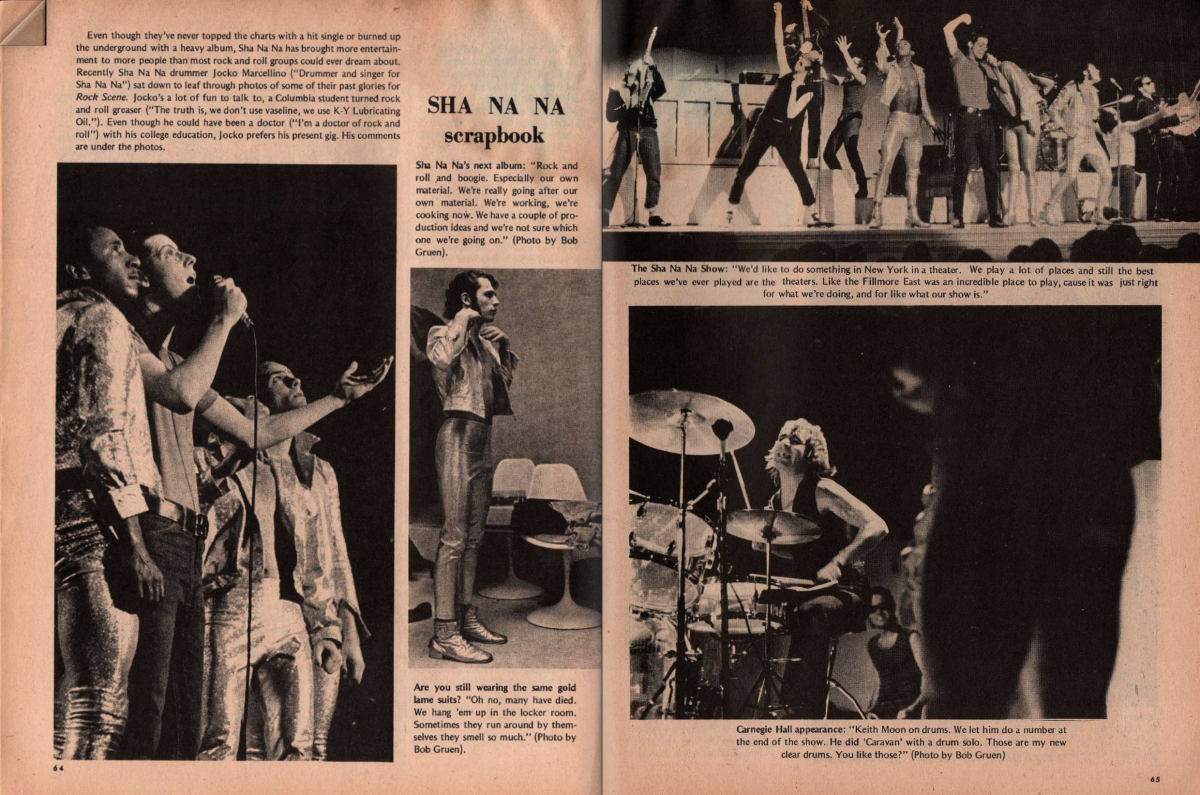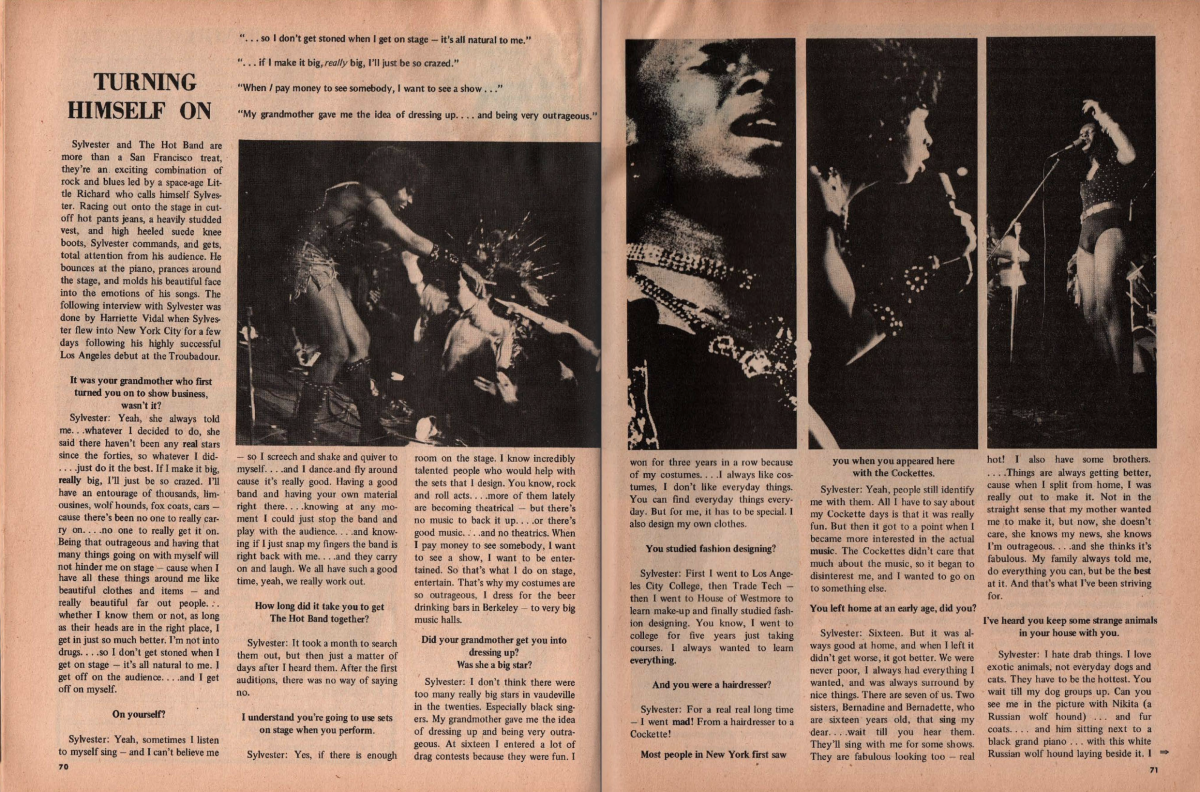The first issue of Rock Scene magazine came out in March, 1973. To celebrate the legendary magazine, I will post complete issues on the anniversary month of their original publication dates. There will be vintage video clips as well as new interviews with the artists discussing their humble beginnings and their own personal rock scenes. You can also go to Rock Scene Auctions to buy and/or bid on classic photos that captured the early days of rock.
I had just entered my teens when the first issue of Rock Scene came out. My older brother was in a cover band and would always have albums and magazines lying around the house. One day I saw a new mag scattered amongst them. On the cover was a big photo of David Bowie from his Ziggy Stardust era. Above his head was the bold, now iconic Rock Scene logo. I opened the magazine and started digging in, reading about the bands and being mesmerized by the photographs. It was the beginning of rock ‘n’ roll for me. I wasn’t much of a reader, but I was drawn to this newfound culture I knew nothing about.
Around the same time I got my first camera, and I began dreaming about what it would be like to take photos of this new emerging scene. Soon after, I went to see Elton John at Madison Square Garden and I snuck my camera in to take some photos. I would do this a lot in the next few years, honing my craft along the way. In 1978, I got my first photograph published in Circus.
By the beginning of the new decade I had a photo spread in Rock Scene. My mission here is to create a Rock Scene time capsule. I want to celebrate the musicians, writers, editors, photographers and others that helped to create the magazine, including the fans that loved it and read each issue religiously. Hopefully, future generations of rock fans will be moved and mesmerized by Rock Scene the same way I was as a kid growing up by the Jersey Shore in the early ‘70s.
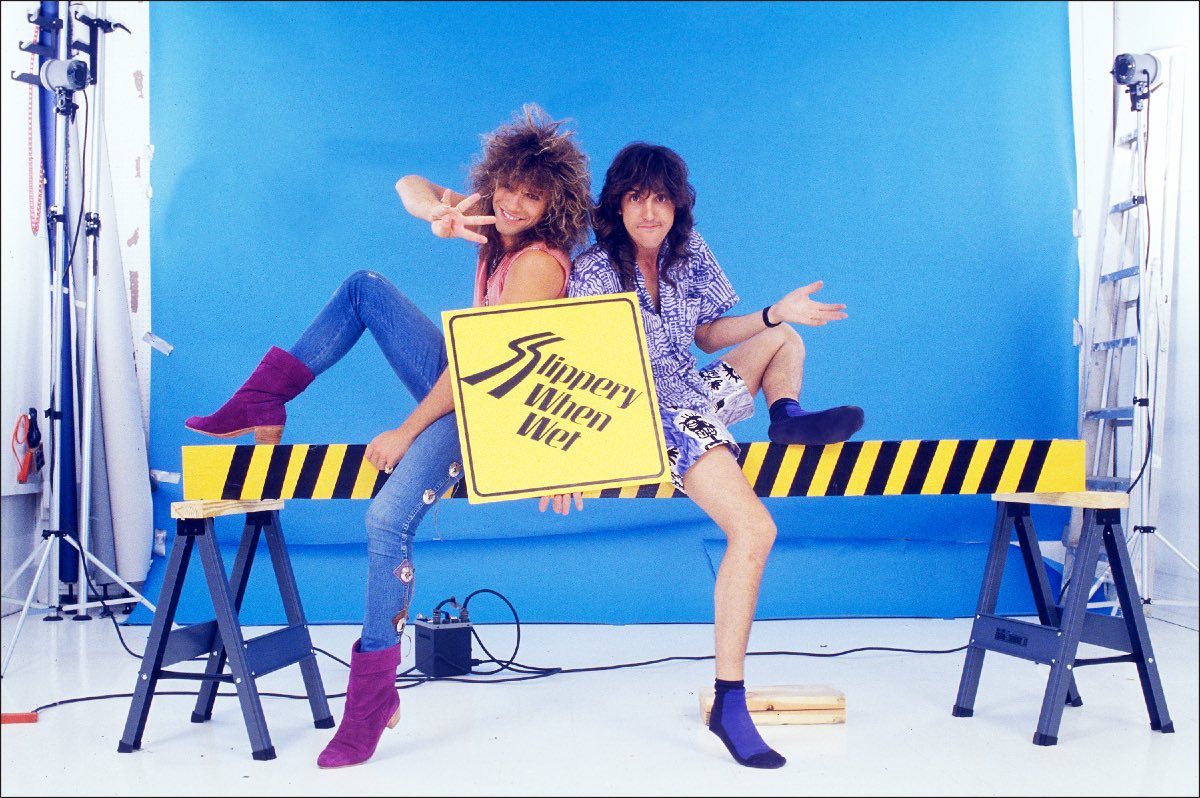
Jon Bon Jovi and me (Mark Weiss), July 1986 in Red Bank New Jersey – Full story here
ROCK SCENE Magazine – March 1973 Volume 1 Number 1
“THE ALTERNATIVE TO THE ALTERNATIVES!”
Richard Robinson – Creator and Founder of ROCK SCENE Magazine (March 1973):
“We spent a lot of time sitting around the office this week trying to come up with a descriptive slogan to explain what we’re planning to do with Rock Scene as a magazine. Eventually we came to the conclusion that Rock Scene was “the alternative to the alternatives”. Not the kind of slogan you might want to go around humming, but pretty much dead center for those of us who’ve been involved in getting this together.
Rock Scene has lots of elements to it, sort of a grafting of Rolling Stone, Hit Parader, Popular Mechanics, and Women’s Wear Daily. It probably doesn’t read like any of those prestigious magazines, but they’ve all influenced this one into existence. Partly for the things we think they’re doing right, admittedly because we think that there are some things they’re doing wrong.
“For the most part, Rock Scene is a rock culture publication. The people who are writing for us are rock people, concerned with the music and the musicians. At the same time we’ve attempted to choose writers who will create the least possible distance between you and the music makers you’re buying this magazine to read about and look at. Good reporting takes you there and lets you make up your own mind. That’s what we’re aiming at.
“In addition we’re not wearing our politics on our sleeves. Politics are an integral part of the American way of life, we don’t deny that. But one of the nice things about music is that the politics is inherent in the sound even if it isn’t outlined in the lyrics. So you just have to listen to the people we’re writing about to know where we’re at.
“Okay, getting all that out of the way, let’s move on, to the first issue of Rock Scene.”
David Bowie talks to Russell Harty
RH – What does David Bowie think about David Bowie?
DB – I find that I’m a person who can take on the guises of different people that I meet. I can switch accents in seconds of meeting somebody and I can adopt their accent. I’ve always found that I collect, Im a collector. I’ve always just seemed to collect personalities, ideas, I have a hodge-podge philosophy which really is very minimal.
RH – Do you believe in God?
DB – I believe in a energy form, I wouldn’t like to put a name to it.
RH – Do you induldge in any kind of worship?
DB: Life, I love life very much indeed.
ROD STEWART – THREE YEARS IN – It’s now been three years since Rod Stewart emerged from the ashes of the Jeff Beck Group to record his first solo album…..
Black Sabbath had just released Vol. 4, which featured hits Snowblind, Changes, and Tomorrow’s Dream. Even after having released four studio albums, the band still dealt with negative connotations surrounding their name. It was often assumed that because of the name; Black Sabbath, the band partook in black magic. “So the Rolling Stones got something to do with landslides,” Ozzy Osbourne wittily remarks on the subject of band names being taken literally. “A name is whatever you want to interpret it to be.” As lead singer Ozzy admits, “If I hadn’t got with a band I probably would be in prison now.”
Before becoming a bass player, Geezer Butler started on a two-string-guitar. He played it for two years before he realized that if you put your finger on the fret of the string you’re playing, it makes a different sound. He eventually graduated to a six string guitar and started learning Beatles, Kinks and Rolling Stones songs.
He formed a band and started playing out. Everywhere they played, they only played once because they were so terrible. Disillusioned, the singer left the group but Geezer wanted to continue. He saw an ad for a new singer who called himself Ozzy Zigg. In the ad were the magic words, “has own P.A.” Geezer met with Ozzy, set up an audition, and Geezer had a new singer.
They formed a blues band with a saxophone player and a slide-guitar player. Now, all they needed was a drummer. Ozzy said he might know someone who might know someone. They went to Tony Iommi’s house and met with Bill Ward. Bill said he would play with them only if Tony could play with them as well. They agreed and began rehearsing. That’s when Geezer realized that they didn’t need a slide-guitar player, a lead guitar player and a rhythm guitar player. So he started tuning down his Fender Telecaster to play the bass lines.
A week of practicing and they booked a gig. On their way to the show, Geezer stopped at a former bass player’s house and borrowed his bass. This would be the first time he would play a bass and it would be in front of an audience. It didn’t go well at all. The band was actually beaten up afterwards. In the following days, they realized that the saxophone player wasn’t cutting it. Tony refused to play with the slide-guitar player, so the two were asked to leave. With the new line-up change, came a new name. They called themselves Earth. However, there was already a band using that name, so they changed their name to Black Sabbath.
My parents really like this whole thing though; my mom made me these black leather pants that I wore onstage…I like the mystery of people not knowing my real name….also I like to keep my dad out of the news since he’s a minister. Can you imagine, having a minister involved in all this!? He loves it – he thinks it’s great.”
A softer side of Alice Cooper is seen in this interview with Finnish National Television in 1973. “I can’t be Alice all the time because he’s a little bit too dangerous” he says. He talks about the importance of the theatrics in their stage show. “You have to put a little icing on the cake, and get up there and do a show for the kids.”
Rainbow Bridge is a 1972 film directed by Chuck Wein that features footage from a Jimi Hendrix concert, and a short piece of conversation between Pat Hartley, Wein and Hendrix. It was mainly financed by Hendrix manager Mike Jeffery, hence his appearance.
The film is about Pat Hartley’s “spiritual awakening” via a visit to the Rainbow Bridge planetary meditation cult on Maui, where, as part of the proceedings Jimi Hendrix visits to play a concert during a ‘Rainbow Bridge’ mass meditation/colour/sound “experiment”.
The Rainbow Bridge concert was a free concert by Jimi Hendrix that was held on July 30, 1970, in a horse pasture above Seabury Hall, on the “Upcountry” slopes of Haleakala, the volcano that makes up 75% of the island of Maui, Hawaii, although it probably last erupted in the 17th century, it is officially considered as being active.
SAY WHAT! (7 minutes in) –
“Another 13,000 feet we go higher and higher and Cleopatra has this beautiful raven hair and what are you supposed to do man except lay there and play the part. And so I’m laying there playing the part and the grape chokes me almost, but I can’t let the joke come out. Because you know I have to be together, right? So, I say, “Oh, groovy great wine there Cleo. Hell, I mean, let’s get it on, forget about all that stuff back there and forget about you and your scene. Let’s just go out in the hills and relax and live.”
A modest audience of a few hundred island hippies, surfers, and students turned up following announcements that Hendrix would play a free concert for a film. Hendrix was also in Hawaii to play the last concert on his ‘Cry of Love’ tour with his reformed ‘Jimi Hendrix Experience’ (with Billy Cox replacing Noel Redding on bass & backing vocals. Mitch Mitchell & Cox were also previously members of Gypsy Sun and Rainbows).
The director Chuck Wein introduced Hendrix’ performance (no mention of a group name) as the driving force of this Rainbow Bridge “experiment”, (this title is often mistaken as being the name of the site of this concert rather than the name of this “Planetary meditation” cult, an extension of the Gaia hypothesis into spiritual realms).
The original cut, not surprisingly used very little of the concert footage, as this was not intended to be a concert film and no music from the performance was released on the official Reprise LP Rainbow Bridge- Original Motion Picture Soundtrack for contractual reasons and due to the original music soundtrack being unreleasable due to its very substandard sonic quality on account of strong winds that day. The album does include the studio tracks featured in the film. However, the music from the concert was distributed as a bootleg recording for three decades, before Radioactive Records released this same bootleg recording on the 2003 album, The Rainbow Bridge Concert: The Early Show until it was withdrawn due to a court action by ‘Experience Hendrix’ which makes this officially a ‘bootleg’ CD release.
The Rainbow Bridge concert was the penultimate performance by Hendrix in the United States, his last was two days later on August 1, 1970, in Honolulu, Hawaii. Hendrix died less than two months later on September 18, 1970 in London, England.
Slade had much success in the UK however in the US they were practically unknown. ‘”I don’t think too many of the people here have heard of us really , they don’t seem to know who we are and what we’re doing….sometimes they”re not even aware that we”re on the bill.” Lead guitarist Dave Hill breaks in on Noddy, “Like the MC will say, here’s the number one group in England….. here they are….. Slade!….and they’ll say ‘who???’”
English rock band Slade performs their 1973 single Cum On Feel The Noize. The song reached No. 1 in the UK, and was the band’s fourth number one single. The song became even more popular when it was covered by Quiet Riot nearly ten years later in 1983. Their cover became so popular that people even thought it was written by Quiet Riot.
Marc Bolan is the cat’s meow. A pint sized rocker that little girls can look up to and big girls can cuddle with one easy embrace. He knows what glitter is all about, and he has created a place for…
Marc Bolan and T. Rex perform their song Children of the Revolution in Apple studios with Ringo Starr on drums and Elton John on piano. The film Born to Boogie was directed by Ringo Starr himself, and was released on the Beatle’s Apple Film label. The official studio version of Children of the Revolution was released as a single by T. Rex on September 8, 1972.
There are some stars who help keep alive the myth that clothes make the man. Stars like Marc Bolan, Rod Stewart, Peter Frampton,, and all the various members of the Dolls. All of these artists perform in outfits of unparalleled brilliance so, in addition to their musical greatness, they all get a A+ for their sartorial splendor.
The New York Dolls perform the song Bad Girl off of their 1973 self-titled debut album. While the record did not initially receive the attention it deserved, it played a huge influence on the 1970s punk rock scene and is now looked back at as one of the greatest debut rock records of all time.
Sign up on the Rock Scene Magazine mailing list – and win some truly brilliant artefacts. And visit the terrific Rock Scene magazine site for more.
Would you like to support Flashbak?
Please consider making a donation to our site. We don't want to rely on ads to bring you the best of visual culture. You can also support us by signing up to our Mailing List. And you can also follow us on Facebook, Instagram and Twitter. For great art and culture delivered to your door, visit our shop.
